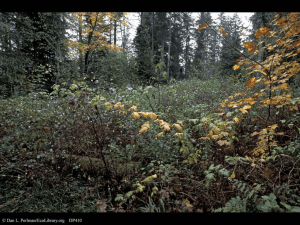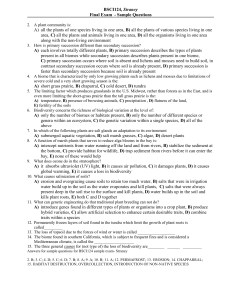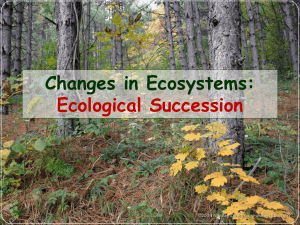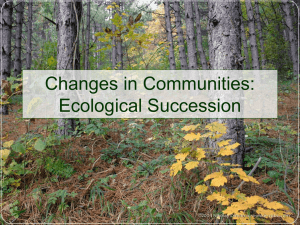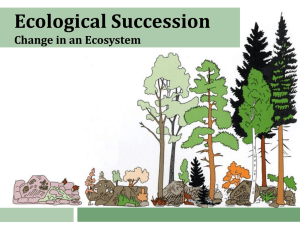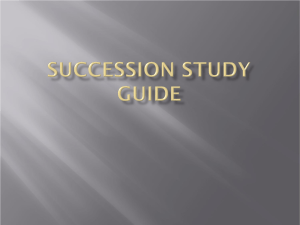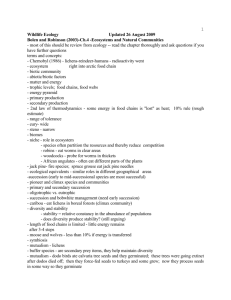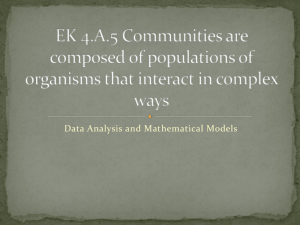Ecological Succession PPT
advertisement
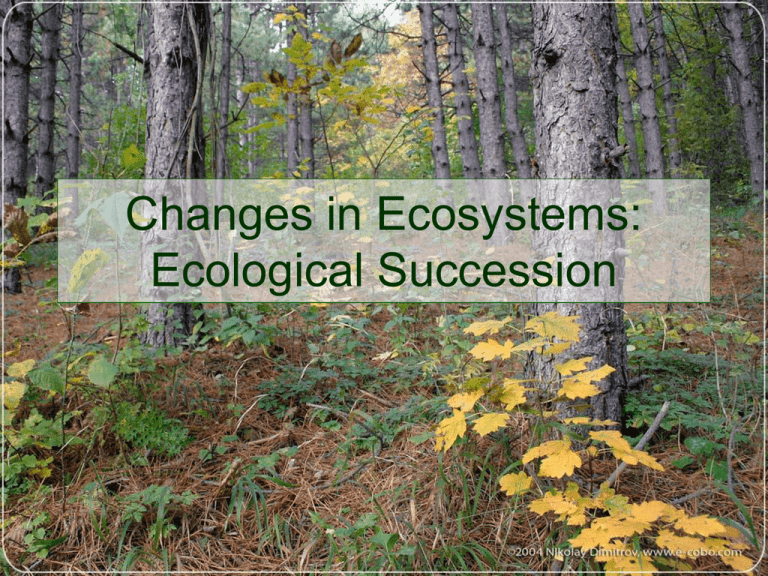
Changes in Ecosystems: Ecological Succession Definition: • Natural, gradual changes in the types of species that live in an area; can be primary or secondary • The gradual replacement of one plant community by another through natural processes over time Primary Succession • Begins in a place without any soil – Sides of volcanoes – Landslides – Flooding • Starts with the arrival of living things such as lichens that do not need soil to survive • Called PIONEER SPECIES http://botit.botany.wisc.edu http://www.saguaro-juniper.com/ Primary Succession • Soil starts to form as lichens and the forces of weather and erosion help break down rocks into smaller pieces • When lichens die, they decompose, adding small amounts of organic matter to the rock to make soil http://www.life.uiuc.edu Primary Succession • Simple plants like mosses and ferns can grow in the new soil http://www.uncw.edu http://uisstc.georgetow n.edu Primary Succession • The simple plants die, adding more organic material • The soil layer thickens, and grasses, wildflowers, and other plants begin to take over http://www.cwrl.utexas.edu Primary Succession • These plants die, and they add more nutrients to the soil • Shrubs and trees can survive now http://www.rowan.edu Primary Succession • Insects, small birds, and mammals have begun to move in • What was once bare rock now supports a variety of life http://p2-raw.greenpeace.org Secondary Succession • Begins in a place that already has soil and was once the home of living organisms • Occurs faster and has different pioneer species than primary succession • Example: after forest fires http://www.geo.arizona.edu http://www.ux1.eiu.edu http://www.agen.ufl.edu Climax Community • A stable group of plants and animals that is the end result of the succession process • Does not always mean big trees – Grasses in prairies – Cacti in deserts
